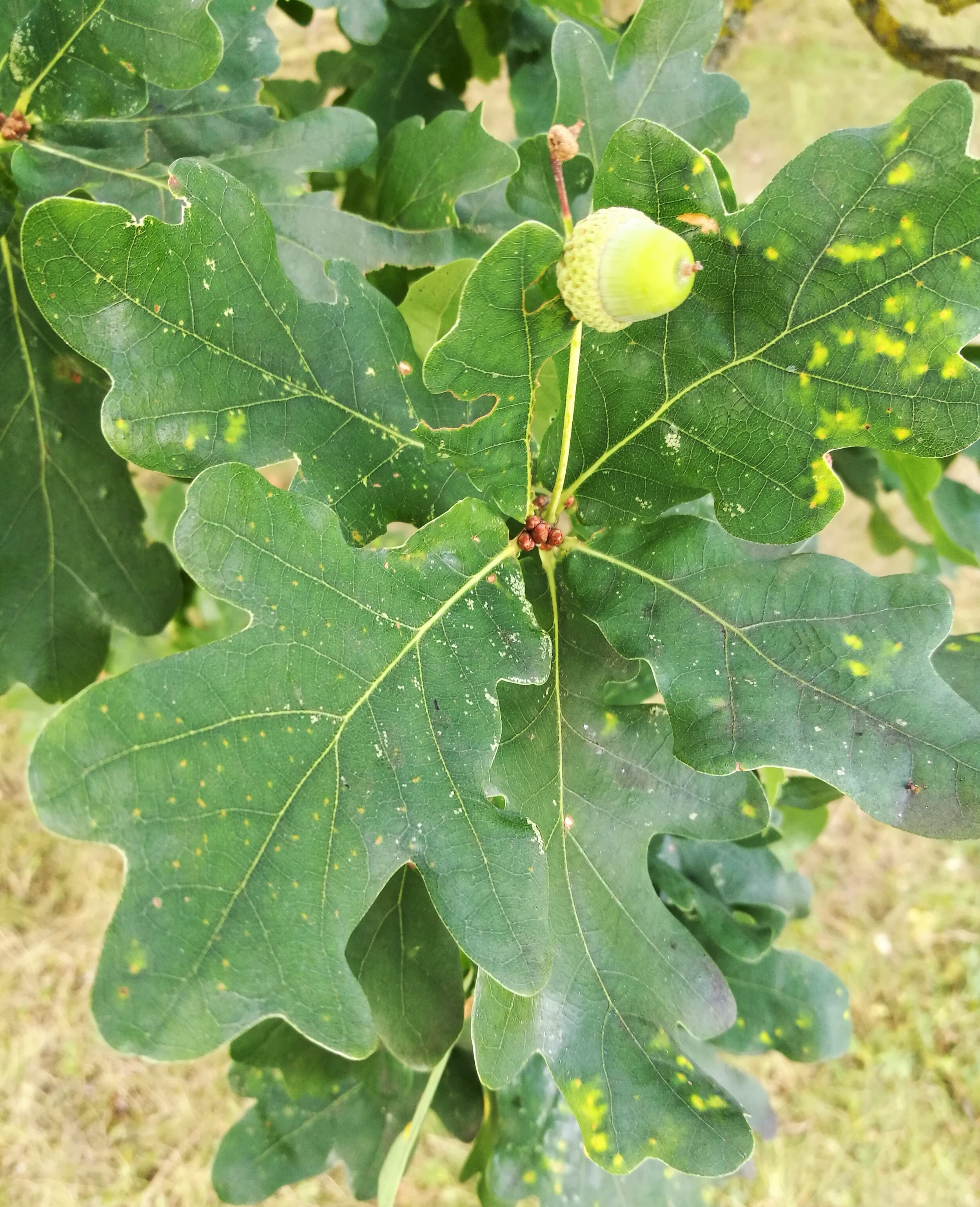English Oak (Quercus robur)
An iconic and symbolically rich tree, these impressive organisms can live for over a thousand years. It’s worth pausing to imagine the history some of these trees have lived through. Oaks, with their dense branch structures and broad trunks, are often seen as sentinels in farmers’ fields, or form thick woodlands on the sides of valleys, with crazed branches reaching out like goblins to spur the imagination. There is something magical and legendary about oak woods - they feel like the haunts of elves. I love that oak bark often plays host to myriad other life forms - moss and lichens, for example - they invite the forest floor upwards.
What it looks like
Oaks can vary in size and form greatly, but will typically have a broad central trunk with long branches growing roughly horizontally away in a broad, rounded crown. The bark is smooth, cracking with age, and often crusted over with lichens and fungi. Branches and twigs are knobbly, often growing in twisted forms. Oak leaves have deep lobes, with smooth, rounded ends. The leaves are very tough, and will remain intact (if brown) on the ground throughout the winter. They grow in bunches, are generally shorter than the length of your hand, and have no prominant ‘stem’ attaching them to branches, unlike sessile oak. Acorns start green, maturing brown, in deep cups. They produce acorns typically in small bunches and in profusion.
Uses
Oak wood is prized for its strength and hardness, making it an excellent choice for tool making and for burning. Oak burns low and slow, making it an excellent choice for cooking fires, as it requires less tending and more control is possible for cooking conditions. It is excellent for grilling, baking and roasting — any kind of cooking where a bed of coals is desired. Acorns can be eaten if first leached of their tannins and then boiled. Acorn flour is a labour intensive but highly nutritious and versatile food. Oak leaves and bark are a good source of tannin and have been used for this throughout history.


